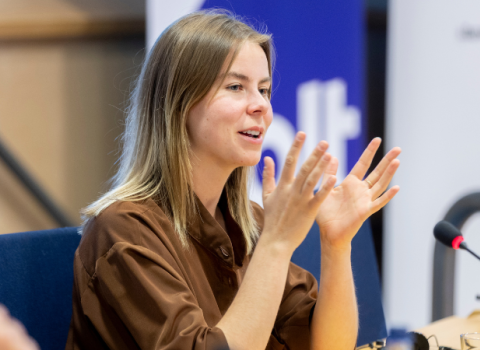
Joël Jean-Mairet
How a Swiss university spin-off got to exit in six years - Interview with Joël Jean-Mairet, Chief Executive Officer and Joint Founder, GlycArt.
How did your idea to improve antibodies begin to crystallize?
The idea started with our proof-of-concept work at the university. We then published this work in Nature Biotechnology in February 1999. That was the beginning of the "science." Several people were very important for our company, particularly the late joint founder Professor James E. Bailey. Because of his experience with Cytos Biotechnology AG, he helped us secure the technology transfer and the intellectual property rights from the Swiss Federal Institute of Technology. After that, we continued with the additional proof-of-concept work.
When did your idea of boosting antibodies begin to get attention?
We were at home and my wife said, "Why don't you write that two-pager for the business-case contest?" So, I wrote it, turned it in the next day, and it got through to the next stage. (The GlycArt business case eventually won the McKinsey & Co.-ETH Venture 2000 business plan competition). All this happened by June 2000.
What's your secret? How did you get from incubation to acquisition in such a short time?
Basically, we had the right technology at the right time. If we had discovered this technology in the late 1980s, it would not have had the same impact as now because antibodies were not yet humanized, and they were basically failing in the clinic because of immunogenicity.
Were you surprised that you received this offer from Roche at such an early stage in your company's development?
In today's environment, nothing is a surprise. The interest in antibodies is growing, and this growth is led by key drugs that have great sales. Since we're focused on improving the effectiveness of specific antibodies, we were highly attractive for any company that wanted to enter aggressively into the oncology space. On top of that, we have three preclinical compounds with great promise. This year we had been planning to raise 45 million Swiss francs via venture capital, enough to last three years, but the Roche deal came through.
We were a natural fit with Roche. We had signed an agreement, they got to know us, they got first-hand information and they became convinced by our technology.
What's your advice to companies that would like to emulate yours?
We started from scratch four-and-a-half years ago as PhD students. This is a great achievement. You need a lot of experience. We assembled experience from the right counsel, and that was very important at the various stages. Also, we were able to assemble a first-rate research group. And then, of course, we had the right strategy - following the hybrid business model and developing a technology with broad applicability. Basically, we had the technology at the right time and the right place.
Were the other GlycArt founders friends at the university?
We were friends, and this all started when I was doing my diploma work under the leadership of Pablo Umaña, the third joint founder. Umaña was finishing his PhD and I was starting my PhD.
Are you all Swiss?
I'm Swiss but I grew up in Barcelona. Pablo is from Costa Rica and Professor Bailey was from the US.
Do you consider yourself more of a scientist or a businessman?
Now I consider myself a businessman.




 A unique international forum for public research organisations and companies to connect their external engagement with strategic interests around their R&D system.
A unique international forum for public research organisations and companies to connect their external engagement with strategic interests around their R&D system.